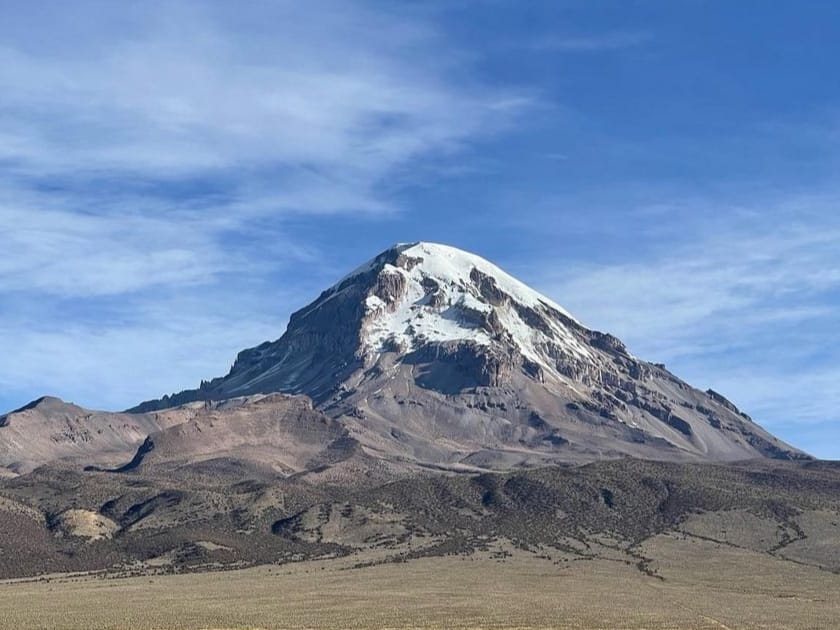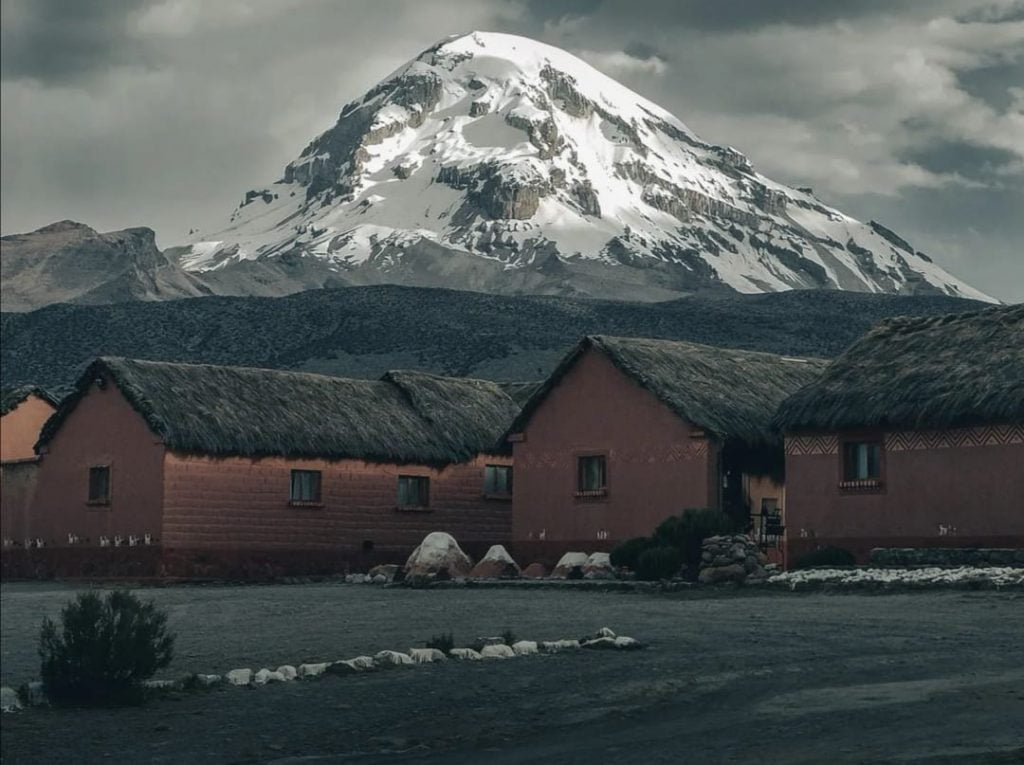If you’re looking for a unique and unforgettable travel experience, Sajama National Park in Bolivia should be at the top of your list. This stunning park is home to a diverse range of wildlife and offers visitors the chance to explore its impressive landscapes and cultural heritage. In this guide, we’ll provide you with all the information you need to plan your visit to Sajama National Park, including what to see and do, how to get there, and when to go.
Table of Contents
About the Sajama National Park
Sajama National Park is located in the western part of Bolivia, near the border with Chile. It covers an area of over 1,000 square miles and is home to the country’s highest mountain, Mount Sajama, which stands at an impressive 21,463 feet. The park is also home to a number of indigenous communities, including the Aymara people, who have inhabited the region for thousands of years.
What to See and Do
There are plenty of activities to enjoy in Sajama National Park, from hiking and mountaineering to wildlife watching and cultural tours. Some of the top attractions include:
- Mount Sajama: The park’s highest peak offers an incredible challenge for experienced mountaineers, as well as stunning views for those who prefer a more leisurely hike.
- Hot Springs: The park is home to a number of natural hot springs, where visitors can relax and soak in the therapeutic waters.
- Wildlife: Sajama National Park is home to a variety of animals, including llamas, alpacas, vicuñas, and Andean foxes. Visitors can also spot a range of bird species, including the Andean condor.
- Indigenous Communities: The park is home to several Aymara communities, who offer cultural tours and homestays for visitors interested in learning more about their way of life.




Animals in Sajama Park
Llama
Llamas are a common sight in Sajama National Park, and are often used as pack animals by local communities. These iconic animals are known for their woolly coats and distinctive faces, and are a popular subject for wildlife photographers.
Alpaca
Alpacas are similar to llamas, but are smaller and have finer wool. They are also commonly found in Sajama National Park, and are often raised by local communities for their wool.
Vicuña
Vicuñas are a wild species of camelid that are native to South America. These graceful animals can be spotted in the park’s high-altitude grasslands, and are known for their soft and valuable wool.
Other Animals
In addition to the park’s camelids, visitors may also spot Andean foxes, viscachas (a type of rodent), and a variety of bird species.
How to Get There
The easiest way to reach Sajama National Park is by flying to La Paz, Bolivia’s capital city, and then taking a bus or private car to the park. The journey takes around 5 hours and passes through some stunning Andean scenery.
Best Time to Visit
The best time to visit Sajama National Park is during the dry season, which runs from May to October. During this time, the weather is mild and clear, making it ideal for hiking and wildlife watching. However, visitors should be prepared for cold temperatures, especially at higher altitudes.
Weather
Due to its high altitude, Sajama National Park experiences cold temperatures year-round. Average temperatures range from around 15°F (-9°C) to 60°F (16°C) depending on the time of year and altitude. Visitors should be prepared for chilly temperatures and strong winds, especially in the park’s higher elevations.
Sajama Month by Month Guide
To help you plan your trip to Sajama, here’s a month-by-month guide to the weather and other factors to consider.
January
January is one of the best months to visit Sajama, as it falls during the dry season. Temperatures are warm during the day and cool at night, making it perfect for hiking and exploring the national park.
February
February is another great month to visit Sajama, with similar weather conditions to January. It’s a popular time for tourists, so expect crowds.
March
March marks the beginning of the transition from the dry season to the rainy season. You may experience some afternoon rain showers during this time of year.
April
April is one of the wettest months in Sajama, so it’s not the ideal time to visit if you’re planning on spending a lot of time outdoors. However, it can still be a good time to visit if you’re interested in seeing the park’s lush vegetation and waterfalls.
May
May marks the start of the dry season, and the weather begins to clear up. It’s a great time to visit if you’re interested in wildlife, as the park’s animals become more active during this time of year.
June
June is a fantastic month to visit Sajama, with warm and sunny weather throughout the day. It’s a popular time for hiking and other outdoor activities.
July
July is another popular month for tourists, as the weather remains mild and dry. The national park is at its busiest during this time of year.
August
August is one of the best months to visit Sajama, with sunny weather and mild temperatures. It’s a great time to see the park’s wildlife, as many of the animals are out and about during the day.
September
September is a quieter time to visit Sajama, as the high season has ended. However, the weather is still pleasant, and the park’s flora and fauna are in full bloom.
October
October marks the end of the dry season, with temperatures starting to drop. However, it’s still a great time to visit if you’re interested in hiking or exploring the national park.
November
November marks the start of the rainy season, with frequent afternoon showers. However, the park is still accessible, and the landscape is lush and green, making it a great time to see the park’s waterfalls and other natural features.
December
December is one of the wettest months in Sajama, with heavy rainfall and occasional thunderstorms. It’s not the ideal time to visit if you’re planning on spending a lot of time outdoors, but it can still be a good time to see the park’s wildlife.
Packing List
When visiting Sajama National Park, it’s important to pack for cold weather and high altitude conditions. Some essential items to bring include:
- Warm layers, including a fleece jacket and down coat
- Thermal underwear and wool socks
- A hat and gloves
- Sunscreen and sunglasses
- Hiking boots or sturdy shoes
- A backpack for carrying water and snacks
- A camera and binoculars for wildlife watching
Why You Should go on a Sajama Adventure?
There are many reasons to visit Sajama, including:
- Breathtaking natural beauty: Sajama National Park is home to some of the most stunning landscapes in Bolivia, including snow-capped mountains, sweeping valleys, and colorful flora and fauna.
- Unique cultural experiences: The village of Sajama is known for its traditional architecture, handicrafts, and cuisine. Visitors can also learn about the indigenous Aymara culture, which has a long history in the area.
- Adventure activities: Sajama offers a range of outdoor activities, including hiking, mountaineering, wildlife spotting, and hot springs. There’s something for everyone, whether you’re an experienced adventurer or a casual tourist.
- Sajama on a Budget: Explore the Place
- If you’re traveling on a budget, there are still plenty of ways to enjoy Sajama. Consider staying in a hostel or camping instead of booking a hotel room. You can also save money by preparing your own meals instead of eating out. Additionally, there are many free or low-cost activities in the area, such as hiking or visiting local markets.
FAQs
Yes, Sajama is generally a safe place to visit. However, like any travel destination, it’s important to be aware of your surroundings and take precautions to keep yourself and your belongings safe.
The closest airport to Sajama is in La Paz, and from there, you can take a bus or hire a private car to reach the village. It’s also possible to arrange tours or transportation through local travel agencies.
It depends on your nationality. Check with the Bolivian embassy or consulate in your country for specific visa requirements.
The village of Sajama is located at an altitude of around 4,200 meters (13,780 feet), while Mount Sajama itself is over 6,500 meters (21,325 feet) high. It’s important to acclimatize properly before attempting any high-altitude activities.
In addition to warm clothing and sturdy shoes, you may want to bring a backpack, a water bottle, sunscreen, a hat, sunglasses, and a camera. It’s also a good idea to pack some snacks and other essentials in case of emergency.
Yes, Sajama National Park is home to a variety of wildlife, including vicuñas, llamas, alpacas, Andean foxes, and many bird species. It’s important to respect the park’s rules and regulations regarding wildlife viewing.
The local cuisine in Sajama features traditional Aymara dishes, such as chuño (dried potatoes) and llama meat. There are also some international options available, as well as vegetarian and vegan options. It’s a good idea to try some of the local specialties while you’re there.
Conclusion
Sajama National Park is a unique and breathtaking destination that offers visitors a chance to experience Bolivia’s natural and cultural heritage. With stunning mountain scenery, diverse wildlife, and indigenous communities, it’s a must-visit for anyone interested in adventure travel and cultural immersion. By following our guide, you can plan a safe and unforgettable trip to this incredible park.

